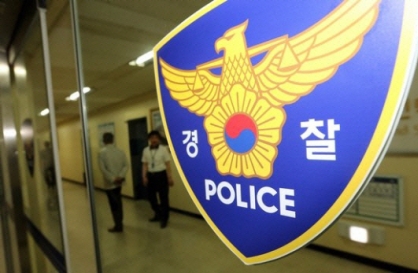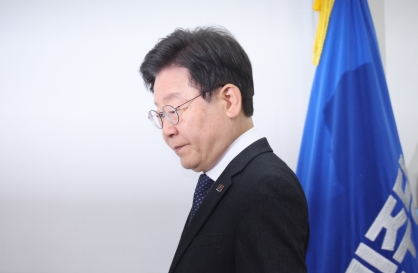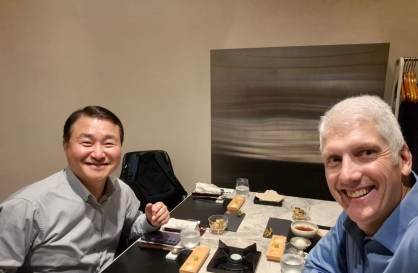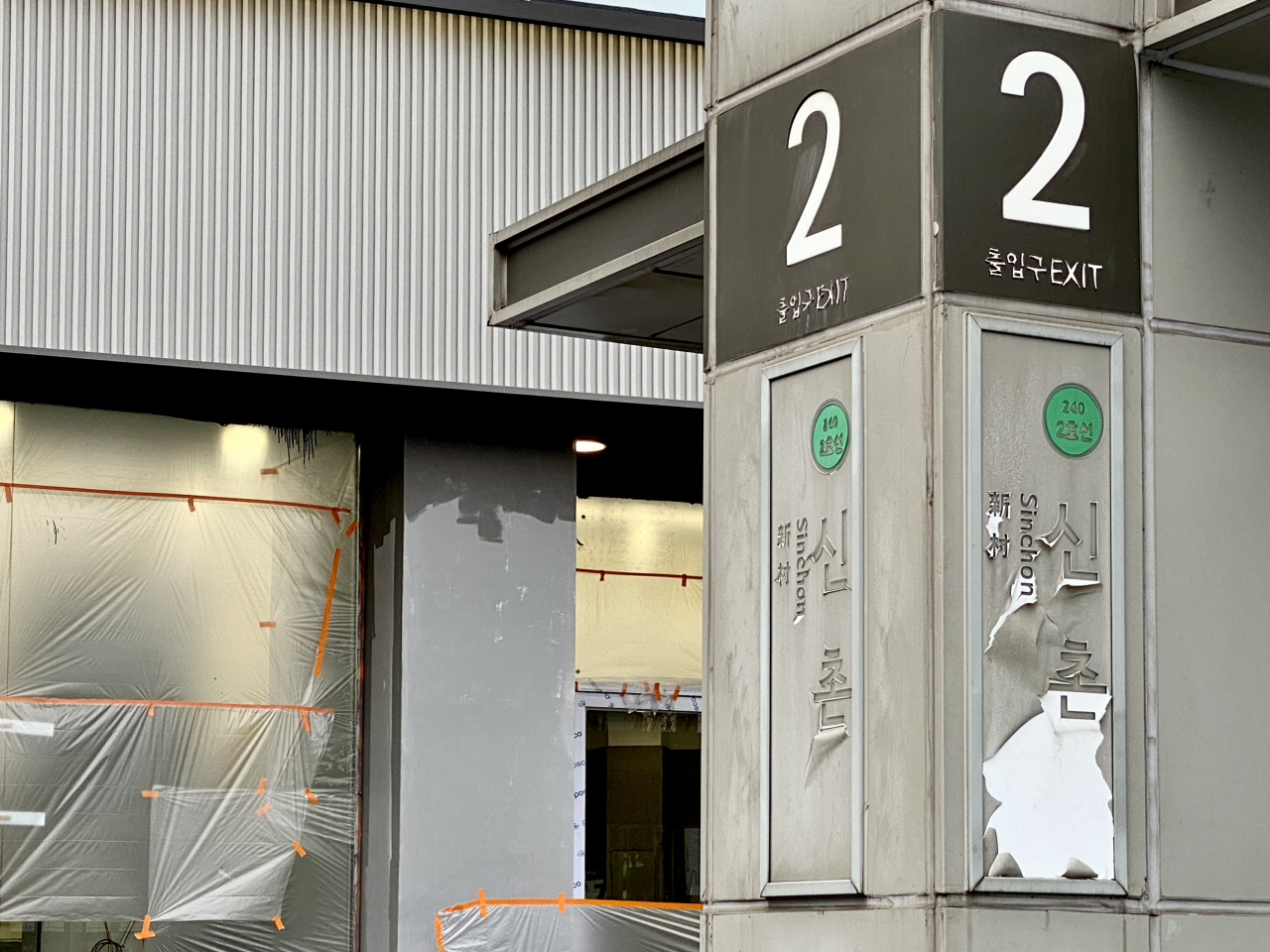 |
A faded sign is seen for Sinchon Station Exit No. 2. (Hwang Joo-young/The Korea Herald) |
Seoul's Sinchon neighborhood has long been a vibrant playground for youngsters and foreign visitors alike.
It's known as a college area thanks to its proximity to prestigious universities like Yonsei, Ewha and Sogang, and its youthful buzz attracted an influx of franchise brands opening stores there in the early 2000s.
Starbucks, for instance, launched its first South Korean store in Sinchon. Lotte Group opened the country’s first Krispy Kreme branch in the student area because of its CEO Shin Dong-bin’s personal affinity to the brand originated from his time studying in the US. But now the tide is going out.
The recent closures of iconic establishments in the Sinchon area -- which stretches from Yonsei University to Ewha Womans University -- brought a shock to those familiar with the area.
In January, Korean hamburger franchise Lotteria's Sinchon branch closed its doors after 18 years of operation. Preceding this closure, A Twosome Place, another popular cafe franchise, also shut down its branch in December.
"I used to frequent the A Twosome Place cafe in Sinchon for gatherings with friends during my college days,” said Park Seung-jun, a 33-year-old office worker who graduated from a university near the district. “It was a place where we studied, relaxed and easily met up by simply calling ahead to rendezvous in front of the cafe.”
"Now, it feels like I've lost some cherished memories,” he added.
Sinchon is more than just somewhere to grab a meal or a cup of coffee on the way to school -- it also served as a popular spot for students to meet for blind dates, gatherings and meetings.
The cafes and fast-food joints here provided an informal yet comfortable environment for socializing, studying and networking.
However, the district’s heyday seems to have passed.
In the fourth quarter of 2023, Sinchon had the highest vacancy rate in Seoul, at 18.3 percent -- significantly higher than the citywide average of 5.8 percent, according to a report compiled by the Korea Real Estate Board.
Park Jeong-bae, who runs a real estate office in Sinchon, said that many store owners closed their businesses and vacated the premises in recent years, with the buildings remaining unoccupied.
"The owner of the building formerly housing Etude House, the cosmetic road shop, reduced the monthly rent by more than 20 percent, but the building has remained vacant for months," Park said.
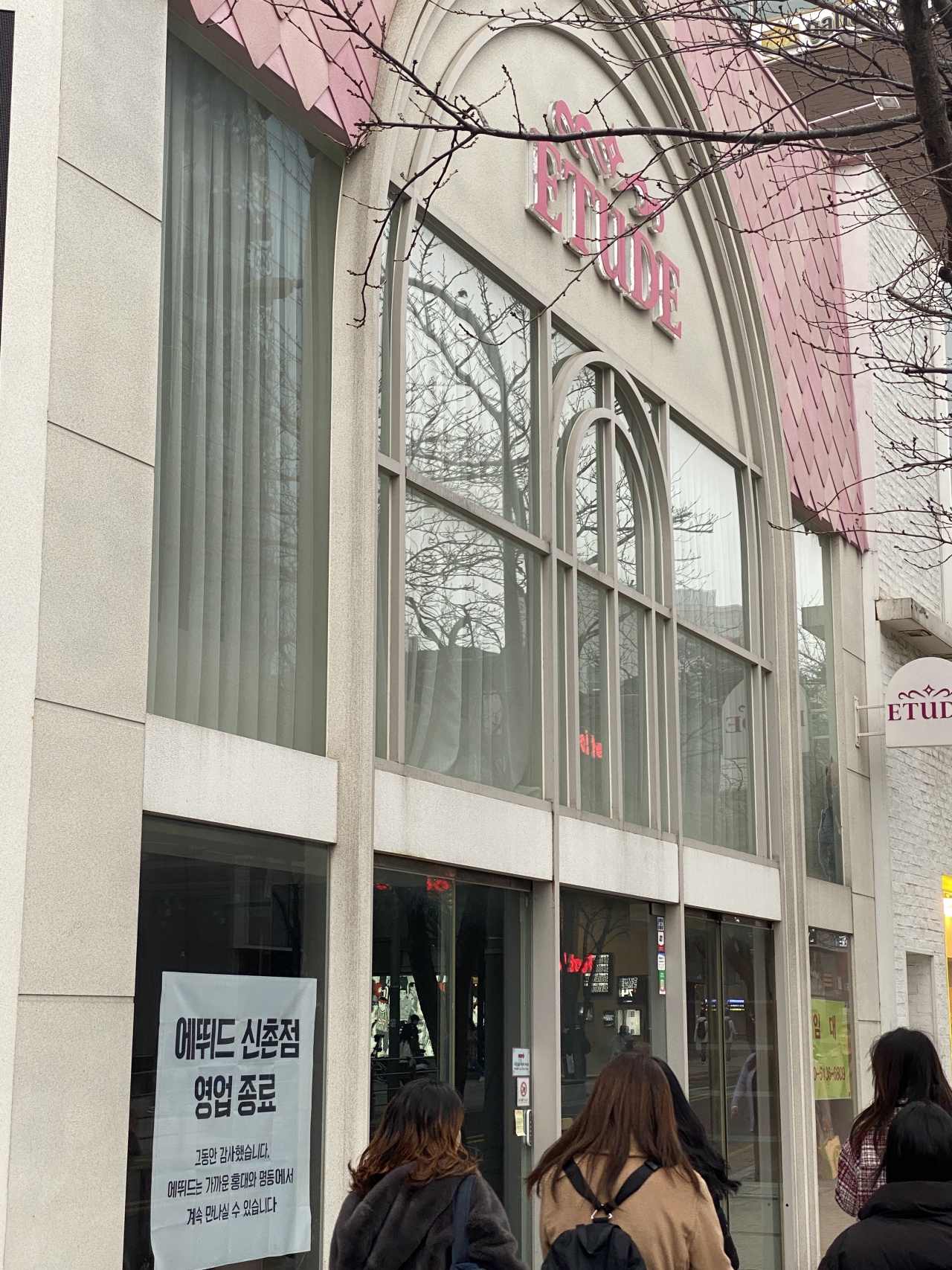 |
A former Etude House cosmetics chain store remains vacant for months without a new tenant. (Hwang Joo-young/The Korea Herald) |
After the COVID-19 pandemic hit the district hard, it faced a significant downturn in foot traffic as well as business activity. More than half of the small clothing stores that were once situated in front of Ewha Womans University and near the Sinchon train station have closed down. Local shopping center aPM, even stopped the operation of elevators at its Sinchon branch due to the decline in visitors. Nearby, elevators bypass the Migliore shopping center and stop only at the Megabox cinema above.
But while the number of visitors declined, rents in Sinchon remained unchanged.
According to several real estate offices in the district, the monthly rents for stores in front of Sinchon Subway Station can reach up to 80 million won ($60,400) per month, largely due to their close proximity to the station.
Other storefronts along the main street of Sinchon running from the subway station to Yonsei University require deposits ranging from 100 million to 300 million won for spaces measuring 30 square meters, with monthly rents of 30 million won.
Similarly, storefronts in the back streets of Sinchon require a deposit of 100 million won for 10 square meters, along with monthly rents of 7 million to 8 million won.
In contrast, the monthly rents for stores in Mangwon-dong and Yeonnam-dong, located a few kilometers away from the district, are less than half the price of those in Sinchon.
This affordability has attracted new businesses and transformed these areas into an appealing alternative to Sinchon. As a result, Mangwon-dong and Yeonnam-dong have maintained a near zero percent vacancy rate for stores and small restaurants since the second quarter of 2022.
The pull of these areas adds to Sinchon's problem of dwindling foot traffic. And because the majority of customers in the district were students with limited budgets, sales per-transaction are also relatively low.
According to a separate report by market tracker Korea Credit Data, the average credit card transactions at restaurants and bars in Sinchon amounted to 30,000 won per payment in December and January. This figure is less than half the 90,000 won recorded in Seodaemun-gu overall, the district in which Sinchon is mostly located.
The remaining establishments in Sinchon primarily consist of pubs and street vendors. They offer budget-friendly options like a cup of tteokbokki or fried chicken at 3,000 won to appeal to the student demographic. Students were drawn to these places because they are cheaper than the school cafeterias, where lunch options typically go for around 7,000 won.
But property owners are reluctant to let rents fall. Even if they do, the above case shown by Park shows that it might not successfully attract a tenant.
But a refusal to bite the bullet may be creating a vicious circle of its own.
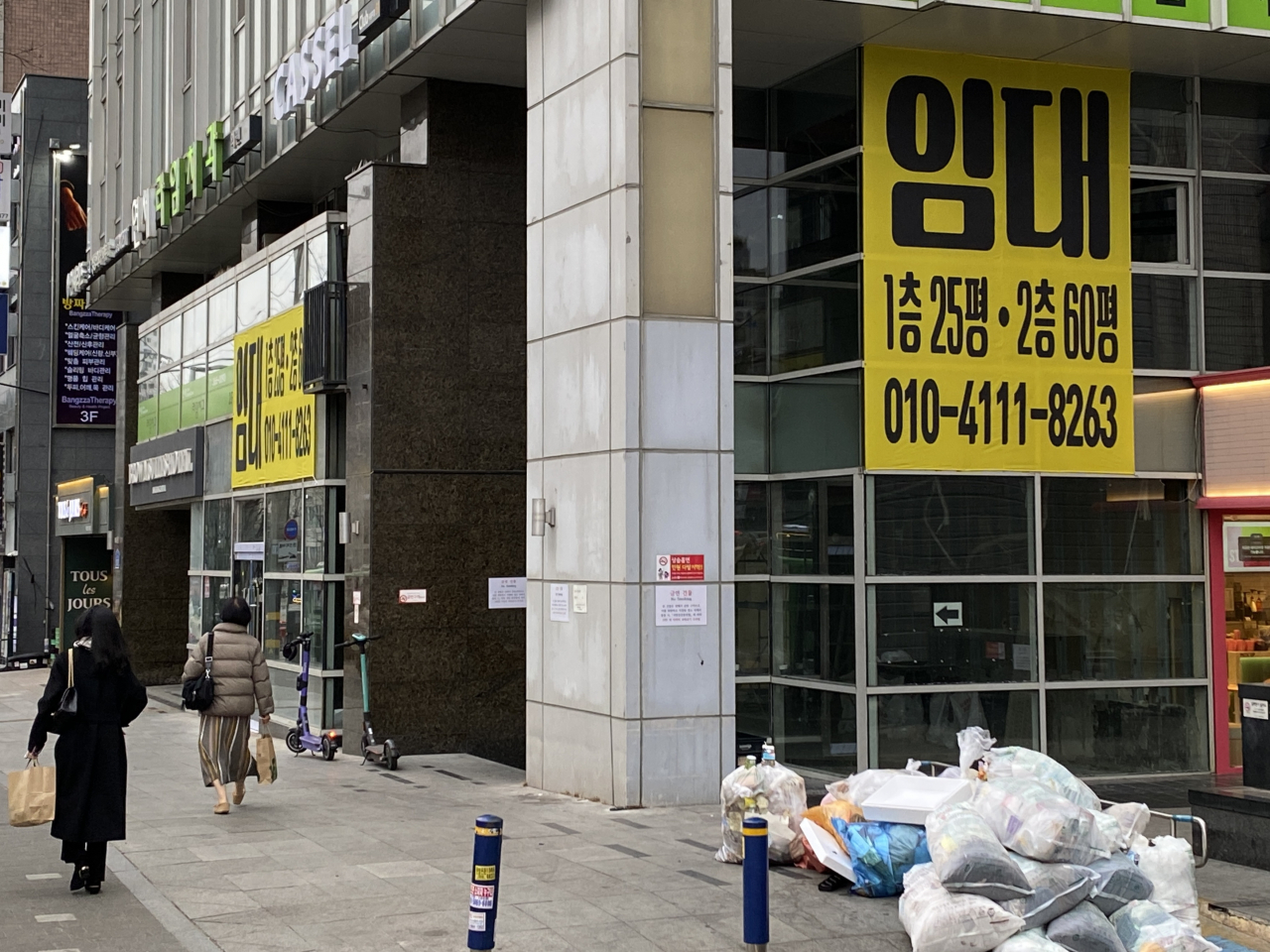 |
A "for lease" sign hangs in the window of a building where Lotteria's Sinchon branch once stood. (Hwang Joo-young/The Korea Herald) |
Sinchon’s run-down atmosphere has in turn put off retail investment in the district.
"In today's market, areas featuring attractions like pop-up stores or trending dessert cafes are gaining popularity. However, these endeavors come with significant costs," said an official from a deli franchise chain who wished to be unnamed.
"As a result, conglomerates are wary of investing in Sinchon because the district is outdated. They see greater potential in allocating their resources elsewhere."
In the meantime, Kwon Dae-jung, a professor in Sogang University’s real state studies department, emphasizes the need for the Sinchon to adapt to evolving retail trends.
"Previously, there wasn't much pressure to create unique and competitive spaces in Sinchon because sales there were stable," Kwon said.
"However, as the district's charm diminishes and people seek more vibrant street experiences in places like Hongdae, Seongsu and Itaewon, Sinchon must innovate to stay relevant."

